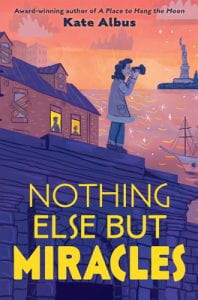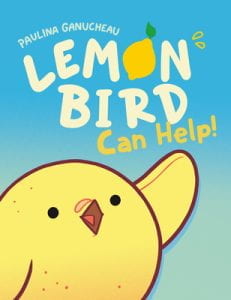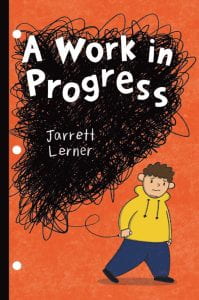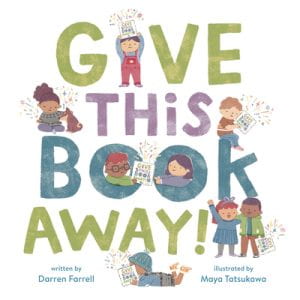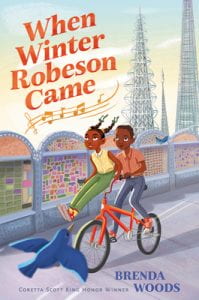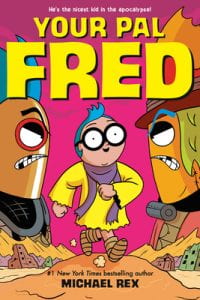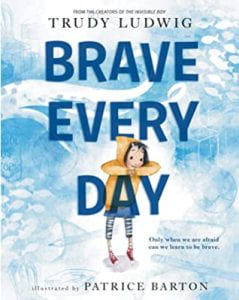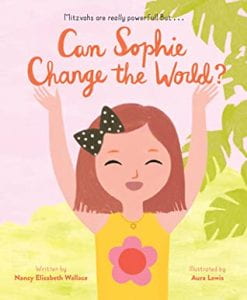 Gupta, Ruchira. I Kick and I Fly. Scholastic Press, 2023. 978-1-338-82509-1. $18.99. 336 p. Grades 7-12.
Gupta, Ruchira. I Kick and I Fly. Scholastic Press, 2023. 978-1-338-82509-1. $18.99. 336 p. Grades 7-12.
Heera comes from the Nat clan in the Red Light district of Forjesganj, India. Even though she and her older brother Salman go to school, Heera gets distracted because she is so hungry, tired, and dirty. Living in poverty, she desperately wants to escape what seems to be her fate, a life of prostitution. Her mother does back-breaking work pulverizing stones on the highway; her father drinks and gambles away what little money they have. A boiled egg is a rare treat for her little sisters. The whole lane is under the thumb of sex traffickers, Ravi Lala, and the local police officer, Suraj Sharma, who is also the father of Heera’s best friend, Rosy. As the annual Kali Mela Fair draws closer to the Girls’ Bazaar, Heera’s father sees no other alternative but to have his fourteen-year-old daughter join the ranks of his niece, Mira Di, as a sex worker. Thankfully, the school’s kung fu team at the nearby girl’s hostel and especially its teacher, Rina Di give Heera respite and empowerment. She takes to kung fu and its philosophy of being in tune with one’s body easily; it seems agility is in her blood, a maternal descendant of people known for their acrobatic feats. As she begins to win competitions, her confidence builds and belief that another type of life for her family is possible grows. When Heera’s life becomes endangered, she moves into the hostel and, for the first time, knows the luxury of sleeping on a bed, having enough food to eat, and getting enough hours to sleep. As her skill at kung fu sharpens, she sees her success changing her parents. When she learns that Rosy is being trafficked, she joins forces with other survivors to rescue her even though it may jeopardize her standing in a special kung fu competition in New York. This compelling book tells a harrowing story at a rapid pace and with a delicate hand. The striking contrast of evil and kindness and the vivid descriptions of conditions of abject poverty is tempered with the well-drawn characterizations of major and minor characters. The author’s note reveals that the plot is not all imagination, but based on similar real-life events. I Kick and I Fly is an important book that should hold a spot in every high school library.
THOUGHTS: This book has a lot of heart, probably because it is projecting the truth. It also contains a lot about kung fu and honors Bruce Lee by inserting his sayings and philosophy. One part where the reader may have to suspend belief is Heera’s sophisticated language as she narrates the story. The background on Heera’s education, her inability to keep up with her studies because of lack of food and sleep, deems it unlikely that her vocabulary would be as rich as Gupta presents it. But that’s okay. Readers need to feel her fear, witness the despair of her family, ache with hope at each new achievement. All characters are Indian. Though it does not spare the horrors of sex trafficking, no acts of sex are described. Mira Di, the cousin who has her brothel set up in the back of the houses, experiences physical abuse as well as the sexual abuse, but the reader finds this out after that action takes place. Violence happens, but Heera triumphs with her kung fu moves. I Kick and I Fly can foster awareness of sex trafficking, poverty, injustice, and inequality.
Realistic Fiction
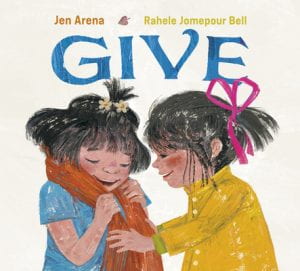 Arena, Jen. Give. Illustrated by Rahele Jomepour Bell. Alfred A. Knopf, 2023. 978-1-524-71499-4 . Unpaged. $18.99. Grades Pre K-2.
Arena, Jen. Give. Illustrated by Rahele Jomepour Bell. Alfred A. Knopf, 2023. 978-1-524-71499-4 . Unpaged. $18.99. Grades Pre K-2.

